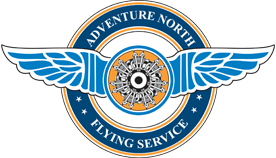Commercial Pilot Rating
Pilots increase your earning potential! The Commercial Pilot Rating will give you the opportunity to have a career in aviation anywhere in the world! Get your Commercial Pilot Rating Lessons in Aitkin Minnesota. Please call for Pricing and Availability.
General Requirements
- Be at least 18 years of age.
- Be able to read, speak, write and understand the English language.
- Hold at least a valid second-class medical certificate, to exercise the privileges of a commercial pilot.
- Pass a knowledge test as well as a practical test.
- Hold a private pilot certificate.
Flight Requirements:
Sec. 61.129 — Aeronautical experience.
(a) For an airplane single-engine rating. Except as provided in paragraph (i) of this section, a person who applies for a commercial pilot certificate with an airplane category and single-engine class rating must log at least 250 hours of flight time as a pilot that consists of at least:
• (1) 100 hours in powered aircraft, of which 50 hours must be in airplanes.
• (2) 100 hours of pilot-in-command flight time, which includes at least—
• (i) 50 hours in airplanes; and
• (ii) 50 hours in cross-country flight of which at least 10 hours must be in airplanes.
• (3) 20 hours of training on the areas of operation listed in §61.127(b)(1) of this part that includes at least—
• (i) Ten hours of instrument training using a view-limiting device including attitude instrument flying, partial panel skills, recovery from unusual flight attitudes, and intercepting and tracking navigational systems. Five hours of the 10 hours required on instrument training must be in a single engine airplane;
• (ii) 10 hours of training in an airplane that has a retractable landing gear, flaps, and a controllable pitch propeller, or is turbine-powered, or for an applicant seeking a single-engine seaplane rating, 10 hours of training in a seaplane that has flaps and a controllable pitch propeller;
• (iii) One 2-hour cross country flight in a single engine airplane in daytime conditions that consists of a total straight-line distance of more than 100 nautical miles from the original point of departure;
• (iv) One 2-hour cross country flight in a single engine airplane in nighttime conditions that consists of a total straight-line distance of more than 100 nautical miles from the original point of departure; and
• (v) Three hours in a single-engine airplane with an authorized instructor in preparation for the practical test within the preceding 2 calendar months from the month of the test.
• (4) Ten hours of solo flight time in a single engine airplane or 10 hours of flight time performing the duties of pilot in command in a single engine airplane with an authorized instructor on board (either of which may be credited towards the flight time requirement under paragraph (a)(2) of this section), on the areas of operation listed under §61.127(b)(1) that include—
• (i) One cross-country flight of not less than 300 nautical miles total distance, with landings at a minimum of three points, one of which is a straight-line distance of at least 250 nautical miles from the original departure point. However, if this requirement is being met in Hawaii, the longest segment need only have a straight-line distance of at least 150 nautical miles; and
• (ii) 5 hours in night VFR conditions with 10 takeoffs and 10 landings (with each landing involving a flight in the traffic pattern) at an airport with an operating control tower.
